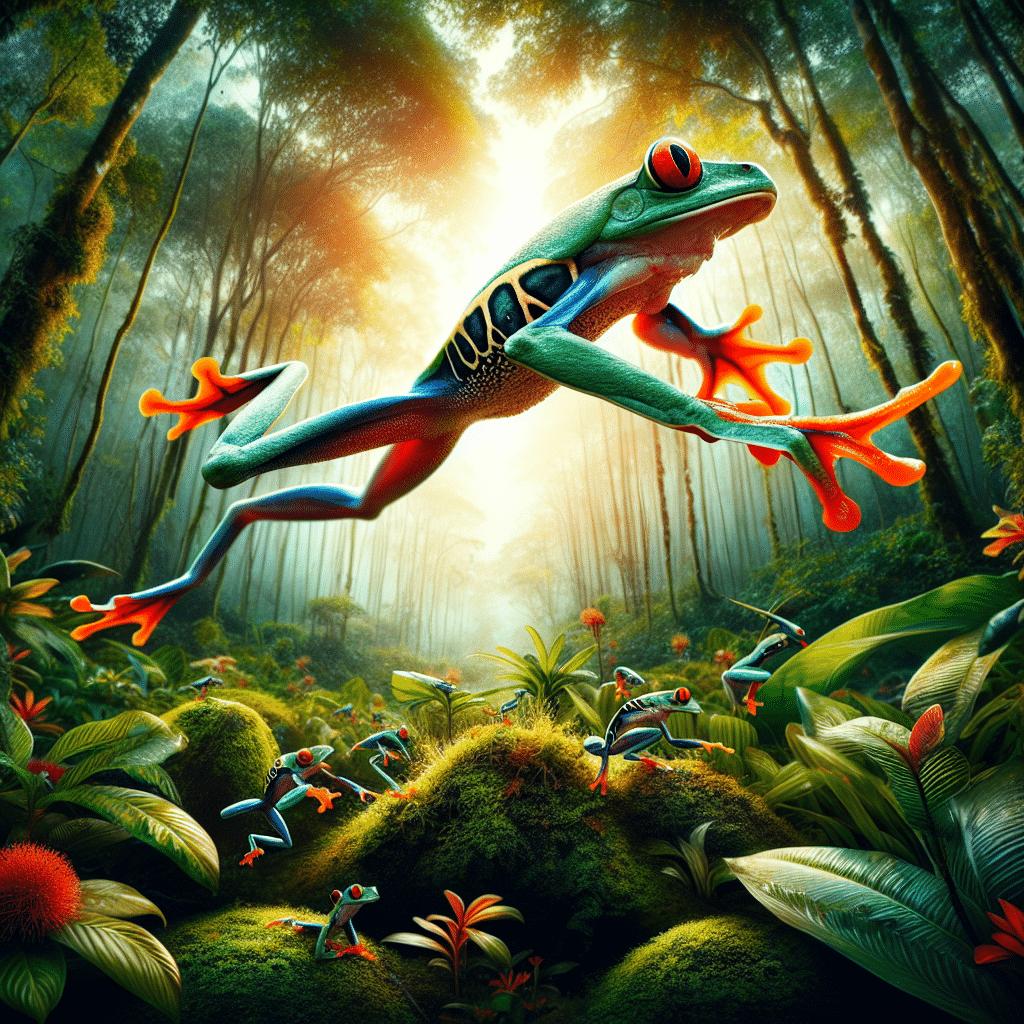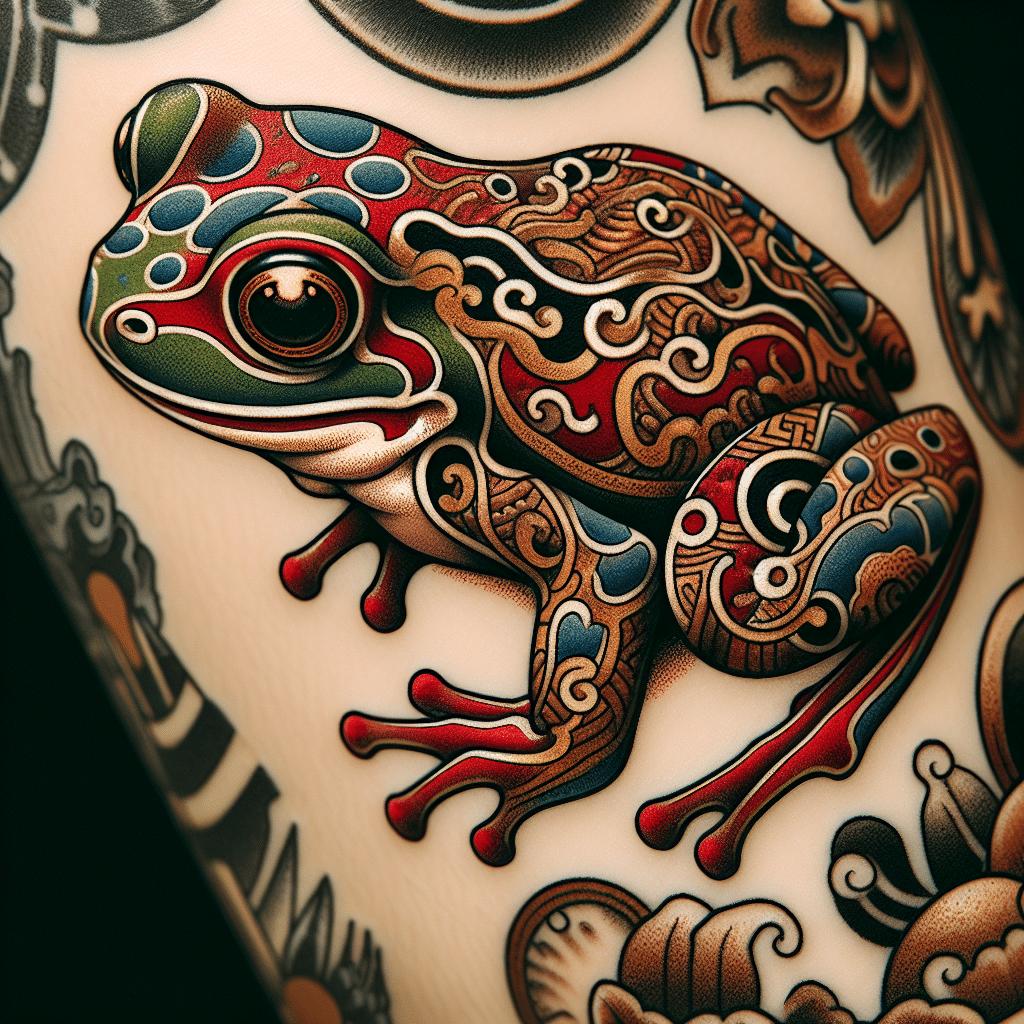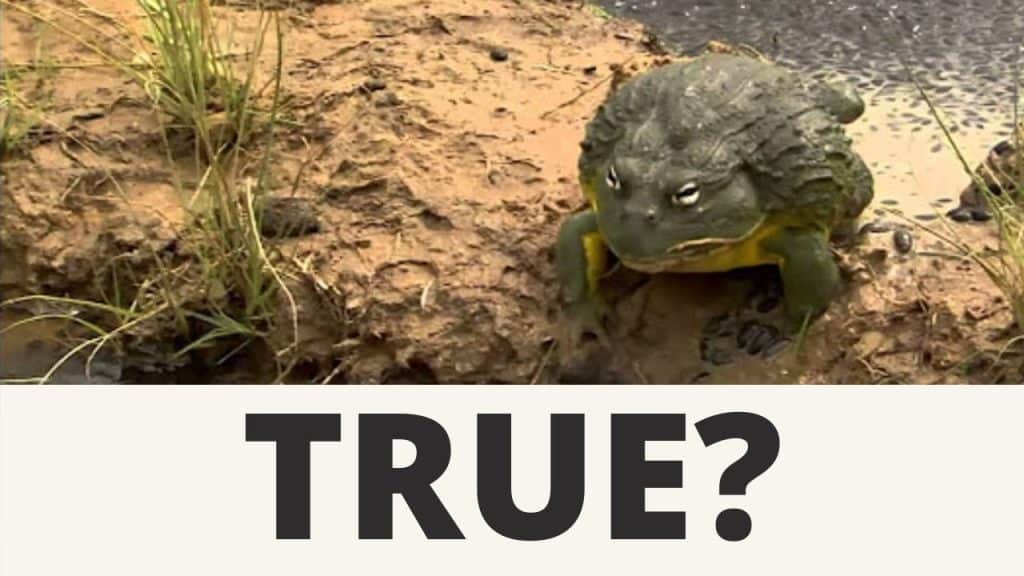Get ready to be amazed by the acrobatic prowess of the red-eyed tree frog! In the wild, these vibrant amphibians are known for their impressive leaping abilities. But just how far can they really launch themselves from one branch to another? Imagine being a tiny frog, and yet vaulting distances that would be the human equivalent of an Olympic long jump. In this article, you’ll uncover the astonishing distance a red-eyed tree frog can cover in a single bound and the remarkable adaptations that make such feats possible. Whether you’re a nature enthusiast or just curious about the extraordinary capabilities of these small but mighty creatures, you’re in for an eye-opening discovery.

Understanding the Red Eyed Tree Frog
Physical characteristics relevant to jumping
You might be curious about how the Red Eyed Tree Frog is built for jumping. Their vivid coloration is more than just eye-catching; these frogs have powerful and elongated hind legs, which are crucial for leaping. They have soft, padded toes that help them grip surfaces as they land, while their slender bodies are optimized for aerodynamics. Their skin is smooth, and you can often see them in a vibrant green that helps camouflage in the lush foliage of their habitat.
Habitat and lifestyle
Imagine living in a rainforest where humidity is your best friend. That’s the lifestyle of the Red Eyed Tree Frog. They thrive in the wet, tropical rainforests of Central and South America, where they can be found lounging on the undersides of leaves or branches. Their nocturnal ways mean you’re more likely to see them active at night, hunting for their next meal or evading predators with incredible leaps.
Musculature and limb structure
When it comes to the musculature and limb structure, your little amphibious friends are like mini Olympic athletes. The composition of their muscles is specialized for swift contraction, allowing for explosive bursts of energy—perfect for those impressive jumps. Their hind limbs are particularly well-muscled and are proportionally longer than their front legs, giving them the leverage they need to launch into the air.
Jumping Mechanics of Frogs
Biomechanics of frog jumps
Now, let’s jump right into the biomechanics of these leaps. Red Eyed Tree Frogs use what’s known as a “power amplification mechanism.” When they prepare to jump, their muscles build up energy and then release it quickly, much like a rubber band snapping. This process allows these small creatures to jump distances that are many times their body length.
Comparison with other jumping animals
Comparing Red Eyed Tree Frogs with other jumping animals, you’ll find kangaroos and grasshoppers in the mix, each with their unique adaptations for jumping. While kangaroos use a pendulum-like motion with their large tails for balance, and grasshoppers harness energy with their springy legs, your little amphibious buddies use their bulked-up back legs and acute muscle control to make their mark in the jumping world.
Energy storage and muscle power
This part gets a bit science-y, but here’s the gist on energy storage and muscle power: the frogs’ tendons act as energy reserves. When they crouch, their muscles stretch the tendons, storing kinetic energy. As they take off, this energy is rapidly converted to kinetic energy, resulting in a powerful jump. Imagine stretching a catapult—similar concept!

Factors Influencing Jump Distance
Physiological factors
Physiological factors play a massive role in jump distance. A Red Eyed Tree Frog’s age, health, and muscle condition can all influence its jumping prowess. Younger, healthier frogs with well-developed muscles will typically out-jump their older or less-fit counterparts.
Environmental factors
Consider the environmental factors, too. The humidity, surface tension of leaves or branches, and temperature of their habitat can either enhance or impede their leaping ability. Wet conditions can make surfaces slippery, but they also provide the necessary moisture for the frogs’ skin—a trade-off, if you will.
Behavioral factors
Behavioral factors are also at play. The motivation behind a jump can result in varying distances. A casual hop to a nearby leaf and a life-or-death leap to escape a predator will look quite different in terms of intensity and distance.
The Jumping Feats of Red Eyed Tree Frogs
Maximum recorded jump distances
You might wonder, just how far can a Red Eyed Tree Frog jump? The maximum recorded distances can reach up to 50 times their body length! Given that these frogs are usually about 2 to 3 inches long, you’re looking at jumps that can clear 10 feet or more in the right conditions.
Average jumping distances
While maximum jump distances are impressive, on average, your typical jumps might range from a more modest 4 to 5 times their body length. Still pretty amazing for such tiny creatures, right?
Jumping in the wild vs laboratory conditions
Now, jumping in the wild vs. laboratory conditions can differ greatly. In the controlled environment of a lab, with optimal conditions and no predators, frogs might not reach their peak performance. However, out in the wild, with the adrenaline rush and necessity of survival, they’re likely to push their limits.

Training and Conditioning
Do Red Eyed Tree Frogs train for better jumping?
The concept of training might not apply to Red Eyed Tree Frogs the way it does to humans, but throughout their lives, their regular activity undoubtedly enhances their jumping abilities. You could think of their everyday movements through the trees as their form of “training.”
Conditioning in captivity
In captivity, frogs might not have the same opportunities to jump as they do in the wild. However, keen caretakers may provide enrichment exercises to simulate wild conditions, helping to maintain their musculature and jump readiness.
Natural conditioning in the wild
In the wild, the very act of surviving conditions these frogs. Whether escaping predators or leaping for their next meal, each jump serves as a conditioning exercise, sculpting those powerful leg muscles and fine-tuning their skills.
Comparison with Other Tree Frog Species
Jumping abilities of different tree frogs
Red Eyed Tree Frogs are undoubtedly gifted jumpers, but how do they stack up against other tree frog species? Some tree frogs may jump further relative to their size, while others focus on sticking to surfaces rather than jumping distances. It’s a diverse world out there!
Adaptations unique to Red Eyed Tree Frogs
The adaptations unique to Red Eyed Tree Frogs, like those striking red eyes, are not just for show. These features can startle predators, giving the frogs a chance to make their escape. Plus, their vibrant colors and nighttime activities reduce the chances of being spotted in the first place.
Evolutionary perspectives on jumping skills
From an evolutionary perspective, the jumping skills of Red Eyed Tree Frogs have likely developed as a survival mechanism, honed over generations. Each successful jump away from danger increases the chance of living long enough to pass on genes—resulting in future generations of equally remarkable leapers.
The Role of Jumping in Survival
Avoiding predators
Jumping is a stellar strategy for avoiding predators. A sudden, lengthy jump can mean the difference between becoming a snack for a snake and living another day. It’s the ultimate, silent getaway: fast, effective, and somewhat unpredictable.
Foraging for food
For foraging food, leaping allows these frogs to catch prey that might otherwise be out of reach. Imagine flicking from one leaf to another in a game of high-stakes tag with your dinner—jumping gives the Red Eyed Tree Frog an edge.
Reproductive behavior and jumping
Reproductive success also plays a part. During mating season, males will jump to find the best spot to advertise themselves to females. Jumping ability can be a display of fitness, thus attracting the ladies and ensuring the frog’s lineage continues.
Leap Measurement Techniques
Scientific methods for measuring jumps
Scientists employ various techniques to measure the jumps of Red Eyed Tree Frogs, from high-speed cameras to motion capture technology. These methods allow them to analyze the mechanics of a jump in exceptional detail, studying everything from the angle of leap to the force of takeoff.
Challenges in data collection
When collecting data on frog jumps, researchers face challenges such as keeping the frogs in view of cameras and getting them to perform under observation. Frogs can be unpredictable, and capturing their natural behavior requires patience and a bit of luck.
Accuracy and reliability of measurements
Ensuring the accuracy and reliability of these measurements is critical. It involves calibrating equipment properly, replicating tests, and accounting for variables such as the frog’s health and environmental conditions. The data obtained provides valuable insights into the capabilities of these athletic amphibians.
Implications of Jumping Ability
Jumping as an indicator of health
A healthy Red Eyed Tree Frog will jump well, and thus, jumping can be an indicator of health. A frog that leaps vigorously is likely in good shape, while a decrease in jumping ability could signal potential health issues or stressors within their habitat.
Conservation concerns and physical abilities
Conservation concerns extend to the physical abilities of these frogs. As environments change or degrade, it could affect the frogs’ jumping abilities, impacting their survival. Their performance can serve as a barometer for the health of their ecosystem.
The impact of environmental changes on jumping
Environmental changes, such as deforestation or climate shifts, can alter the habitats of Red Eyed Tree Frogs. As their natural jumping platforms become scarce or altered, it could reduce their ability to forage and evade predators efficiently.
Jumping in Captivity vs. The Wild
Effects of captivity on jump lengths
It’s crucial to note how captivity can affect jump lengths. Without the same stimuli, space constraints, and environmental conditions they have in the wild, captive frogs may show reduced jumping performance.
Enrichment and its impact on physical prowess
Enrichment can combat the effects of captivity—things like varied terrain, different levels to climb and jump from, and ample space can maintain a frog’s physical prowess and mimic the complexity of their natural habitat.
Studying jumps in natural habitats
Studying jumps in natural habitats, researchers gain the best understanding of these frogs’ true capabilities. It allows them to see how frogs leap when faced with the full range of natural challenges and opportunities, providing a complete picture of their remarkable abilities.



